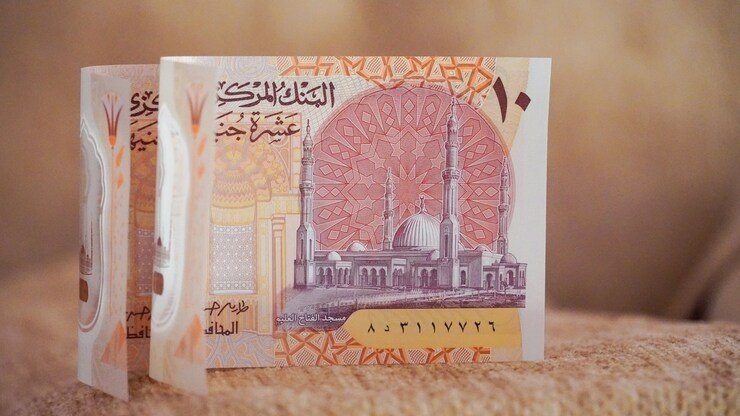2026 could be Egypt’s economic turning point
 © Unsplash
© Unsplash
Egypt’s economy is approaching a critical inflection point. After a period of fiscal tightening, currency reform, and macroeconomic adjustment, 2026 is projected to mark the beginning of a new growth cycle — one driven by industrial production, export expansion, and resilient service sectors like tourism and telecommunications.
That’s the outlook shared by Minister of Planning, Economic Development, and International Cooperation Rania Al-Mashat, speaking on the sidelines of the IMF–World Bank Annual Meetings in Washington, where Egypt’s delegation is engaging lenders and investors on the next phase of its reform program.
Real growth from the real economy
Al-Mashat described 2026 as the year when Egypt expects “real contributions from the real economy” — a reference to a shift away from debt-driven or public-sector-heavy growth toward private-led investment and production.
She noted that the government’s Narrative for Economic Development, launched earlier this year, identifies manufacturing, exports, logistics, and digital infrastructure as top priorities for attracting foreign direct investment (FDI).
“Egypt’s infrastructure foundations are now in place,” she said, referring to the extensive transport, energy, and industrial zones developed since 2015. “The next step is to turn them into engines of export growth.”
From reform fatigue to reform payoff
Egypt’s new optimism comes after a difficult two-year adjustment period marked by high inflation, currency devaluation, and rising borrowing costs. But Al-Mashat argued that the reform cycle that began in 2024 is already yielding results.
Among the measures implemented:
Fiscal consolidation to reduce the budget deficit
Monetary tightening to stabilize prices
A flexible exchange rate regime to restore market confidence
A cap on public investment to make room for private capital
The results are tangible. GDP growth reached 4.4 percent by June 2025 and 5 percent in Q4, driven by industrial output and tradeable sectors. According to Al-Mashat, Egypt’s “second-generation reforms” are focused less on macro stabilization and more on competitiveness, export readiness, and private-sector participation.
Global validation and credit confidence
International lenders have taken notice.
Fitch recently reaffirmed Egypt’s sovereign rating at “B” with a stable outlook, citing improved reserves and easing inflation.
S&P Global Ratings upgraded Egypt’s credit rating, signaling growing confidence in the country’s policy direction.
The World Bank revised its GDP growth forecast upward, reflecting a recovery in tourism and external investment.
At the IMF–World Bank meetings, Egypt’s delegation — led by the Central Bank governor — is working to finalize the fifth and sixth reviews of its $8 billion IMF loan and the first review of the $1.3 billion Resilience and Sustainability Facility (RSF), both key to unlocking further concessional financing and investor trust.
Industrial zones and export-led growth
One of Egypt’s strongest investment stories continues to be the Suez Canal Economic Zone (SCZone), which has drawn new foreign capital, joint ventures, and manufacturing plants in logistics, green energy, and shipping services.
Al-Mashat highlighted SCZone projects as proof that investors are responding to Egypt’s structural reforms. “We are seeing strong flows into the zone — not just from Gulf investors, but from Europe and Asia as well,” she said.
The government’s industrial strategy aims to increase the share of manufacturing exports to over 25 percent of total exports by 2028, while the telecom sector’s digital expansion and tourism rebound are expected to add momentum to non-oil growth.
Suez Canal recovery and geopolitical resilience
The minister also touched on Egypt’s geopolitical resilience amid regional instability. Reduced Suez Canal traffic — a key source of foreign currency — tested the economy earlier this year, but she said Egypt adapted quickly through policy flexibility and diversified revenue streams.
The recent Sharm El-Sheikh Summit for Peace, she added, could mark a regional turning point: “A sustainable settlement in Gaza would restore calm and allow shipping traffic through the canal to resume fully,” lowering trade costs globally and boosting Egypt’s foreign earnings.
2026: from adjustment to acceleration
For investors, the message from Cairo is clear — the macro reform phase is giving way to a production and investment phase. Egypt aims to channel stability into industrial output, export expansion, and service-sector scaling, with continued backing from the IMF, World Bank, and EU.
“There are significant growth opportunities if we stay the course,” Al-Mashat said. “Our goal is a more open, competitive, and investor-driven economy — one that rewards resilience with results.”
Bottom line:
If 2024 and 2025 were years of correction, 2026 is designed to be the year of payoff. With structural reforms in motion, ratings upgrades in hand, and industrial zones attracting capital, Egypt is positioning itself for a measurable economic rebound — one that foreign investors are already watching closely.


